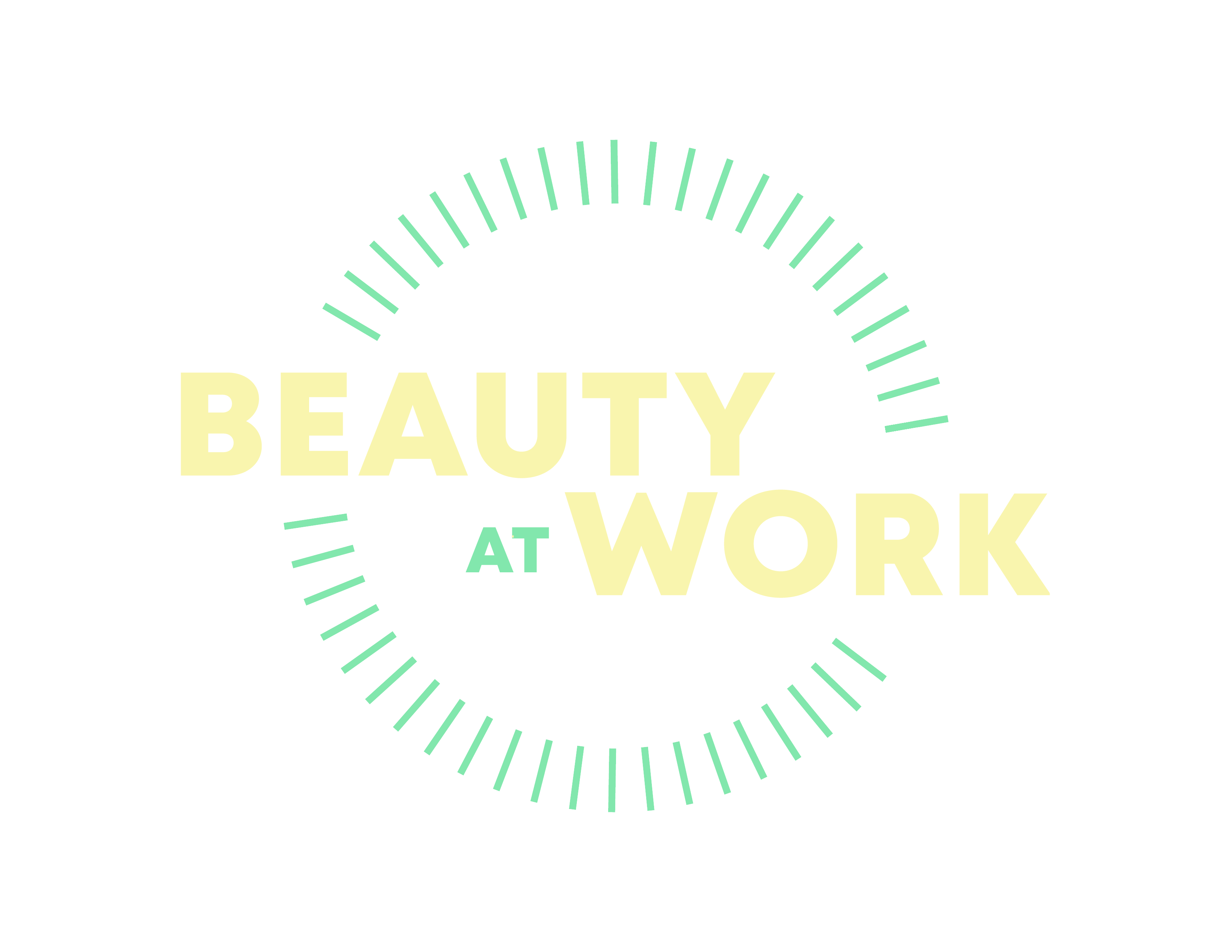Design Without Borders

Picture this: You're exploring the vibrant streets of Tokyo. You've just moved there, even though you don't know a soul in the city, and can't speak the language. Every corner reveals a unique sight, a different aroma, a whole new sensory experience. The old and the new blend seamlessly, from ancient shrines nestled between modern skyscrapers, to the traditional tea cups you find in secondhand stores.
It is in this cultural melting pot that Adi Cohen found her new calling: to become an architect without borders, a nomadic designer traversing the globe and crafting meaningful spaces while building new collaborations along the way.
Adi is the founder of The New Movement, an architecture studio that designs one-of-a-kind projects worldwide. She is the host of the podcast "Go Out and Talk to Strangers," a TEDx speaker, a Forbes-featured entrepreneur, passionate creator, and free thinker. Adi is on a mission to create "the most inspiring places on earth", with the intention of using the built environment as a tool to help people thrive. Adi is a global citizen, and the first architect to be living a nomadic lifestyle while working. She uses her travels as a source of inspiration, a way to connect to ancient wisdom and learn from local communities.
From Israel to Japan, and everywhere else her wanderlust takes her, Adi is revolutionizing the world of architecture, weaving together aesthetics, design, and community. In our conversation, we dive into Adi's inspiring journey. It starts with a familiar narrative – a young student stepping into the professional world with bright eyes and high hopes, only to find it less fulfilling than she had imagined. But what follows is a transformative journey of self-discovery and redefinition, sparked by a personal crisis and fuelled by an insatiable curiosity. As she shares her experiences, Adi will not only help us view architecture in a new light, but also challenge our perspectives on travel, work, and how to live a more beautiful life.
You can watch or listen to our conversation below. Subscribe wherever you get your podcasts. An unedited transcript follows.
Subscribe wherever you get your podcasts: iOS | Android | Spotify | RSS | Amazon | Stitcher | Podvine
Interview Transcript
Brandon: Welcome Adi. It's so good to have you on the podcast.
Adi: It's wonderful to be here, Brandon. Thank you for having me.
Brandon: Well, it's really such an honor. So we're going to talk about beauty. We're going to talk about the work you do as an architect. We're going to talk about the nomadic way of working that you've been exploring in the last little while, and all the other cool stuff you've been doing. But let's get started maybe from your childhood. If you could go back in time and think about things that have shaped your sense of what beauty means to you, experiences you've had, or moments, or associations, or images that you've had that linger with you until today. What does beauty mean to you, and where did you encounter it when you were growing up?
Adi: That's such a good question. I guess I grew up in a small city where all the houses look alike. From a very young age, I remember having this strong feeling of, "I don't want to end up like this." I guess, for me, in a way, I joke around. I call it the Disney syndrome: "There must be more to life than this." Seeing my parents working so hard and everyone around me, I was just like, I looked at it. I was like, "Is this really all there is?" That thought keeps going with me as I grow older.
First day of school, I remember sitting in a classroom and just being really bored. You're not allowed to move. You can't even draw. The teachers were like, "Look at me." I remember thinking to myself, "Oh, is this how it's going to be from now on?" The same thought happened again as I started working in an office space. I guess, why am I telling you this? Because my own journey is a journey that goes through what's not working for me, what I don't find beautiful, what's not inspiring, and then you have to reinvent it. You have to go out and explore, and see what else life could be like. I didn't have a specific vision in mind. It always was like what I don't want to do, and the rest is mystery. So I have to figure it out as I go.
Brandon: Were there moments though when you were growing up where everything looked the same, where you experienced some contrast to where you saw something different?
Adi: Absolutely, yeah.
Brandon: What was that like? I mean, what was the thing that sparked your sense of there's got to be more? Were there pieces of evidence that you were collecting along the way?
Adi: Yeah, absolutely. We used to travel a lot as a family. Every weekend, we'll go somewhere else — a lot of nature, camping, being outdoors. Even in school, I remember climbing on trees and just sitting there. The teachers would freak out, and come there and yell at me. They'd be like, "Come down now." I don't know. There was something there that I find beautiful in that perspective, being really high up on a tree, that I thought was beautiful. Another thing that I used to do as a child was: I had this big window in my room. I would just sit there and look at the neighbor's houses, and see if I can tell who is about to switch on or off the light. I don't know why it fascinated me.
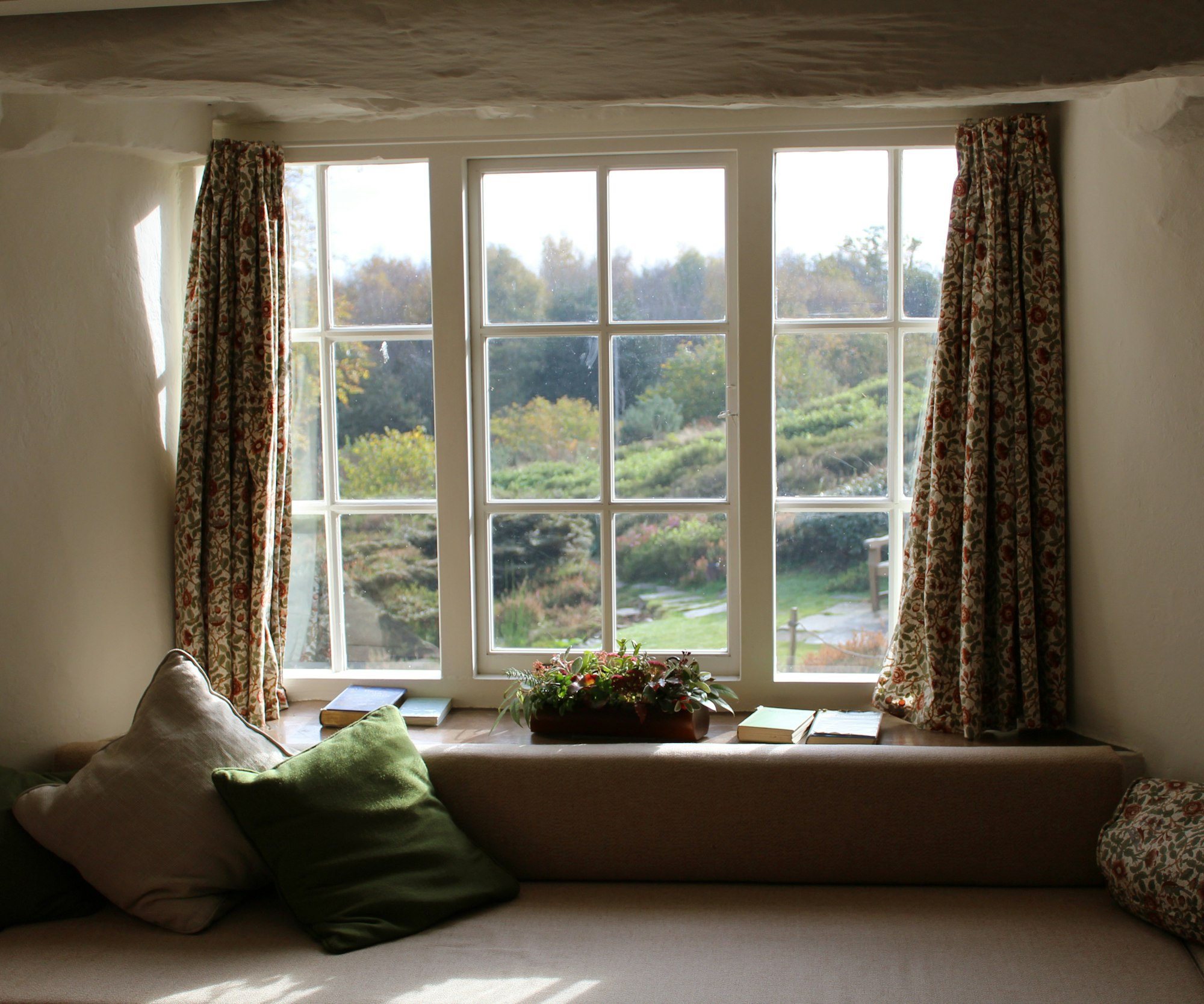
Brandon: Okay. Wow, yeah.
Adi: Yeah, welcome to my childhood.
Brandon: That's great. I think we've all had moments like that where there were things that we find mysterious about the world and trying to predict things that are in the world around us. So how then did you get drawn into architecture? Were there experiences you had that led you to want to move into doing design? What was that? What sparked your imagination there?
Adi: Architecture — I was always interested in human beings. When I was 20, I spent a year in India. I just went one way. I wanted to see how long would it take me until I get tired of traveling. It took a while. I explored different—
Brandon: Where did you go to?
Adi: So many places. I started with the famous places where tourists go to, like north and then Goa. Then I had this whole Buddhist phase where I went to monasteries and stayed there for a few months. I discovered meditation. Then I started going to tribal areas near Kolkata. I went through party phase, volunteering phase, hiking and mountain phase. Because a year is a long time. At some point, it felt like my hands are starting to itch. I had too much energy. I was like, okay, I think I'm done reading books and getting into conversations with people. I want to do something, but I wasn't really sure what it is. At the time, I was a bit against just having a document from a university that tells you what you're good at. I had this romantic vision in mind of, "If I'll ever want to learn anything, I'll just find a master and work my way into learning that thing." Some sort of apprenticeship, I think it's called.
Brandon: Apprenticeship, yeah.
Adi: Then I was working in the studio for creating light fixture from porcelain. Every day, I would hitchhike home. I liked engaging into conversations with strangers. That's something that I still do. It's even the name of my show. It's called Go Out & Talk to Strangers. Because it's part of my life philosophy. It always exposed me to new views.
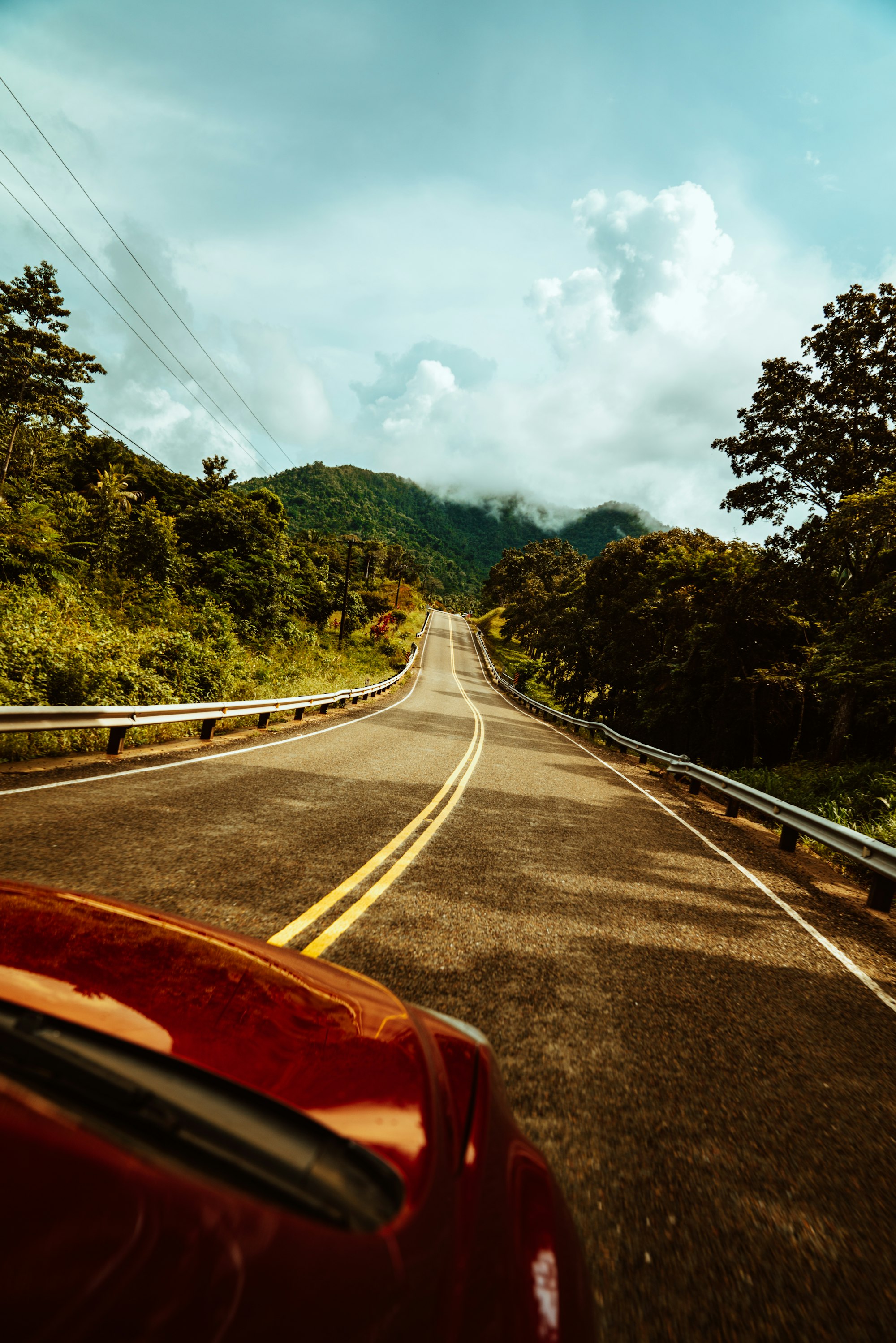
One day, someone planted this idea in my head. She's like, "You don't have to get a degree. But maybe just take a class in something that you find interesting." Then it stayed with me. What do I find interesting? What do I find interesting? Architecture came to mind. Because my mom co-founded an ecological farm in Israel, an educational farm. I remember being very excited about sustainable design, but it almost always seemed not enough. It's always a bit tired. It's not as pretty as normal houses. I just thought that we can do that better, in a sense that it's not a step down in how we live. Maybe we can make it even better than standard houses. Then I realized that it's five years to become an architect. I was so scared of that commitment. A very wise friend of mine advised me just to start, do the first year and see how that goes. I completely fell in love. I completely fell in love with architecture.
Brandon: Why? What about it?
Adi: It was just so magical to be able to create spaces. We had a lot of — first year, it's a lot of foundation work — history of architecture and art, and drawing lessons, and the craziest ideas that you can imagine. It's like you're just starting, so they let you express all the wild things that you have in you. That dynamic, it's that building. The School of Architecture had people 24 hours there. It was always the light is on. There was this collaborative spirit, where you can always go to the third floor or to the first floor and talk to other people in 3 AM and brainstorm your project. It just completely lit me up, and I fell in love with doing that.
Brandon: So you're talking to strangers all the time. You're building collaborative projects together. You're shaping the space around you. It's a bit ironic though, because there's such a commitment of place with art. I mean, you have a building that stays in one place. It doesn't move around. Then there is your sort of nomadic spirit. Actually, I want to ask you about that a little bit. How did you reconcile that just with your own interest in movement, in travel, and so on with the kind of commitment to place and space that architecture requires?
Adi: That's a great question. It's always that tension between being still and moving. I think that this is where the essence of life is. So for me, I started by being still. The first job I got as an architect — I was a third-year student, and I was presenting one of my projects in an exhibition. Someone walked up to me and said, "Who designed this?" I said, "That's me." He gave me his business card. He told me, "Call me." This is how I started to work. Brandon, I was so excited to finally start a real job with real buildings, not a cardboard, and design for real clients. Life happened as I started to experience the reality outside of the academic world. It was so different. We did creative work just a little portion of our time. Then the rest of the time were just drawings and bureaucracy. That's good. We need that. That's part of the training. But I felt unfulfilled for such a long time. Then I moved into a smaller firm. So it took me seven years to admit that this is not working for me. I became a partner. So it was a long time.
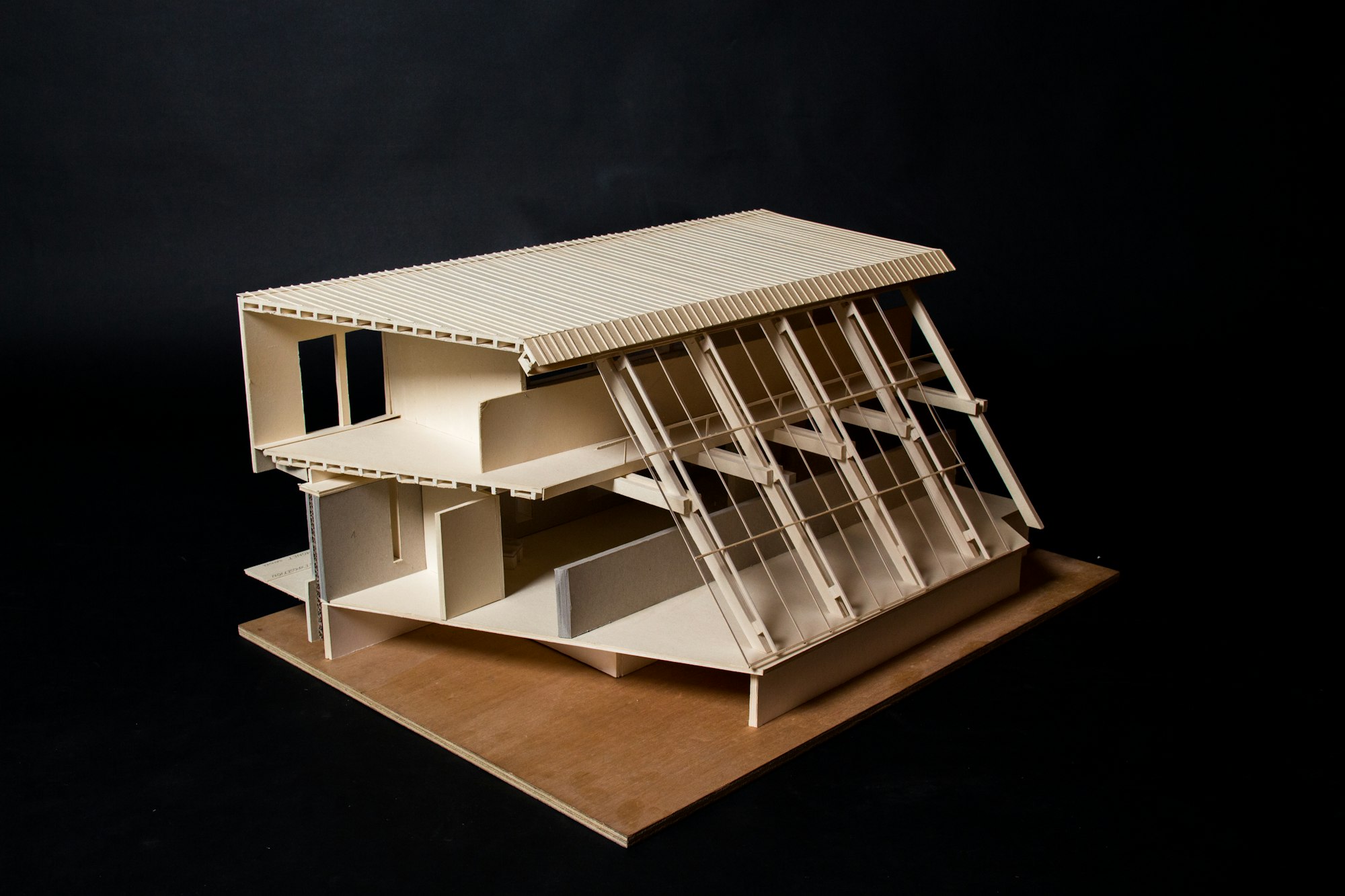
Then a personal crisis happened in my life. Me and my partner, we decided to split. A dear friend of mine passed from cancer. At that point, I was changing apartments in Tel Aviv — I'm from Israel originally — all the time. It just felt like the city is trying to push me away. There was a 24-hour construction site in one apartment, and then I moved to a different one. There was a club on the weekend that makes the building shake. I just felt like enough is enough. I didn't know what I'm going to do next. But it's definitely not living the same day over and over again. I'm going to sell all my belongings and get a one-way ticket to Japan. And I did. This is how I started.
Brandon: Why Japan?
Adi: Oh, why not? It's like I was so fascinated by Japan and Japanese culture. I think that, deep down, I just wanted to be somewhere that is so radically different from everything I know and everything I ever experienced. Even the letters, I can't even read the letters. It's just something that is so radically different. That was the beginning of my journey.
Brandon: How long were you in Japan?
Adi: The maximum visa. So you get 90 days. On the 87th day, I was like, okay, it's time to go somewhere else.
Brandon: Okay. What did you do there? I mean, you've come from this crisis. You've moved to a totally alien environment where you don't— did you speak the language at all? How did you navigate?
Adi: No.
Brandon: What was it like?
Adi: Oh, it was feeling alive again after being in an office environment for so long, under the fluorescent light with a fixed temperature, just in front of the screen. You didn't touch anything; you just touched keyboards or a little bit of paper. It's a very uninspiring environment for a creative people. And all of a sudden, I was in Tokyo. I stayed there for five or six weeks. Every day, I would choose a spot on Tokyo's map that I haven't been to before. I just go there and wander around for hours, without having a specific destination. That act of immersing yourself in a new environment, meeting people, and getting to know places, and visiting all spaces only Tokyo can offer really was just an experience of going back to my senses to my body. I felt alive again.
But again, I was still so confused about what's next for me. It's not that I knew that I am going to do what I do now. Back then, I gave up the idea of being an architect, because I was taught there is only one way of doing that. So I was in Tokyo. Then I traveled to some other areas. Things started to shift when I met a couple who had just bought a hotel. They asked me to help them with the design of the hotel. That was the first sign that I can do both, the first sign that I can actually travel and work as an architect. That was something that I had to validate again and again. I don't know how deep we want to go there, because we also want to talk about beauty.
Brandon: Yeah, well, let's go in this direction. What did you build? Because this led you to create something.
Adi: Yeah, so they just bought a hotel, and they wanted to renovate it. They had this idea, this plan to cancel the lobby and the common areas and create more rooms. Sounds great, right? So they told me, "But we're not sure. Maybe you want to come and have a look, and tell us what you think." So I went there. What they did with the lobby, well it did not did it. It's just the way the building was structured is that: the lay out, all the public areas were behind closed doors. So you can't see them. It means that you can walk from the main door to your room, and back out without having any social interaction. Obviously, it made people not use that space because they never remember it exists. So what we did, we changed the design of the floor. We made it more inviting and visual. It's a little bit like you know how when you want to eat healthier, and you put a bowl of fruit in your kitchen. So you see it; you remember to have some fruits from time to time. It's exactly the same. So whenever we see a space, it's an invitation to behave in a certain way or to engage with the world in a certain way. So we have to be very mindful of what are we creating and how people are responding to it. That was just the first example.
Another thing we did there, they had those IKEA cups, and I didn't realize why. Apparently, that village is quite famous for ski. They have many Australians coming in, and they say they keep on breaking glasses. They didn't want to get the expensive ones. I said no, there's no way we're going to use that. We went to secondhand stores. In Japan, you can find the most beautiful secondhand sets of tea cups in those big wooden boxes. It's just like $1 or $2. It's insane. I was like, okay, we're getting rid of everything that is not local. I don't mind. If it breaks, we'll go back, and we'll buy more. But we have to deliver an experience of being in Japan.
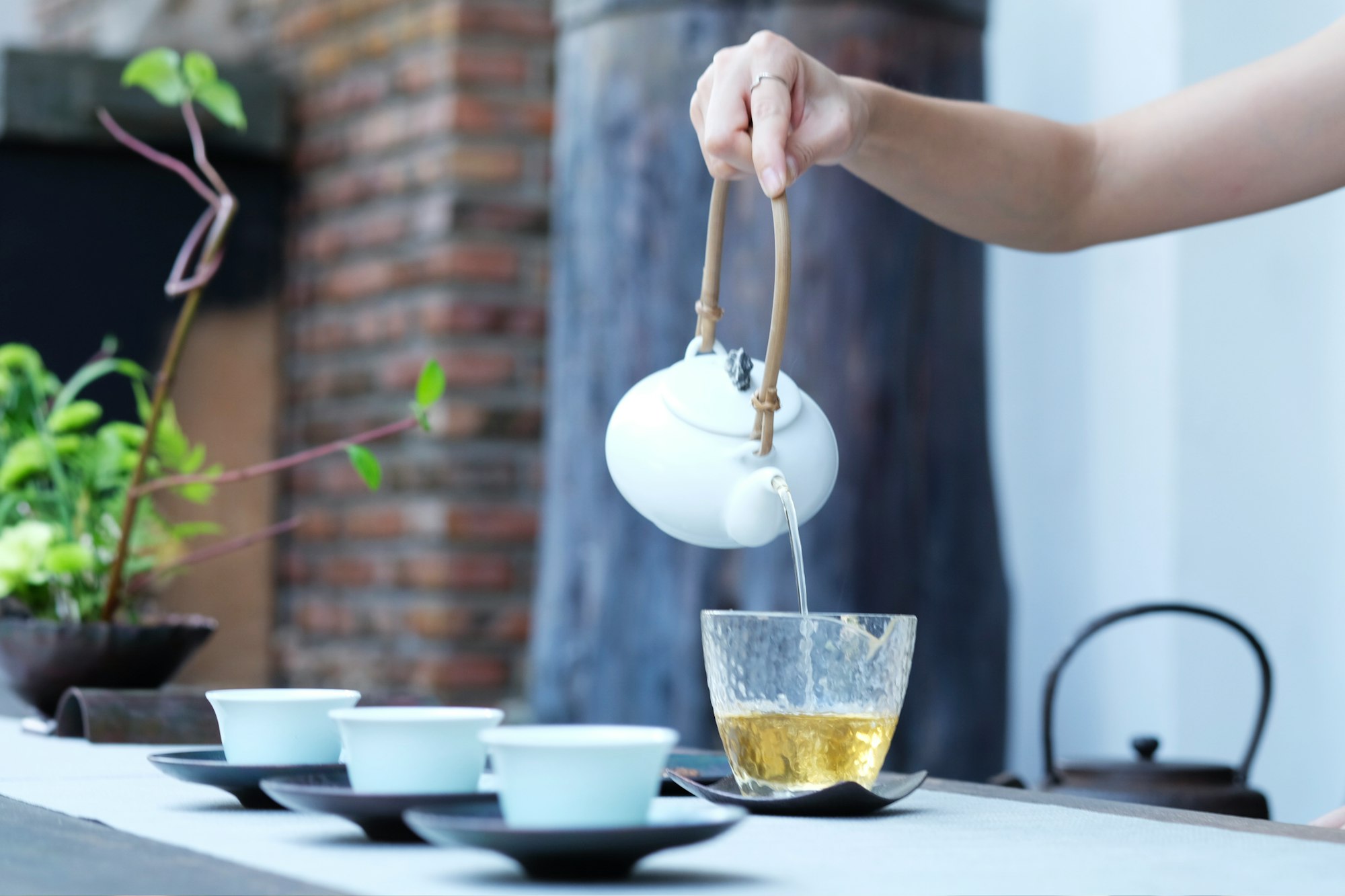
Brandon: Wow. How did that go? Tell me what that led to. Did you feel that was successful, and what did that lead you to build after?
Adi: That was great. I left them with the instructions and blueprint and some aesthetic instructions. Then I kept traveling. About a year later, they messaged me. They said, "You wouldn't believe. The lobby is full all the time. There are people using it all the time." I was just like, this is great. But at that time, I thought it's just a one-time thing. So I kept on traveling in Japan. At some point, I conserved somewhere in front of the art island. It's a funny story. This couple, they used to live in San Francisco and now they're back in Japan. They have this vision where they want to — there's a phenomenon where villages are getting abandoned because of young people moving to the cities. They wanted to bring back that age group back to the village to live there. They were trying to convince the city hall to allow them to use this beautiful seafront building that used to be a hospital. When they realized that I'm an architect, they asked me if I'm willing to do a consulting session with them and to record it, so they can present it to the city hall. So we did that. That's the second time that I'm already using my skills as an architect.
So when I arrived in Thailand, I decided to run an experiment. I posted on a local Facebook group. "Hi. I'm Adi. I'm an architect. I'm going to be here for a few weeks. Just let me know if you need anything." And people reached out. I was completely mind-blown. I didn't even have a website back then. I guess I was onto something. I wasn't really sure what back then, but it became clearer and clearer with time. There is this group of global citizens of location independent people. They're seeking to create something that has both this global spirit of freedom, but also something that is very respectful towards local heritage and culture. When they're looking for an architect, they're looking for someone who understands both worlds. That was me for some of them. Then I made my part of the deal, which is, I had the website planned. I started spreading the word wherever I went. Also, I needed to change. You asked, how does it work? Because buildings, it takes time. Usually, you have to stay there for two years. So I had to find which part of architecture can I do on the go, or can I specialize in? Obviously also, my license does not apply globally, right? That's another thing.
Brandon: Yeah, right.
Adi: Basically, it's the same model as the biggest firms in the world are using — concept development and then collaboration with a local firm that does execution and licensing. I really did not invent anything. I just didn't wait for me to become this really big brand. Then to receive the invites to go places, I just created those collaborations before. That allows me to do what I love fast, and that's design.
Brandon: While also doing the traveling that you love to do.
Adi: Yes.
Brandon: So let me ask you. Just going back to Japan, because you've grown up — again, I don't know. When you mentioned you're traveling with your parents, was it in Israel, or were you traveling around the world? What was that like? I'm just curious to know how you reconciled aesthetic styles. Because they're so culturally specific. The things that we are used to in a particular culture might be very different from what others in different cultures find aesthetically pleasing. And so when it comes to design, did you find that to be a challenge? Moving from Israel to Japan, what was that like? So I'm just really curious to how that played a role.
Adi: Yeah, absolutely. Great question. No, I never left Israel before that trip to India. We were just traveling in Israel, mostly nature. But you know what? I do think that we have different aesthetics with different cultures, but we also have subconscious tendencies as human beings. There are some patterns that we all respond to because of the way we evolved. When we design, we accommodate those. We always have to add the local layer. But underneath that, the aesthetic DNA of human beings is kind of similar. Do you agree?
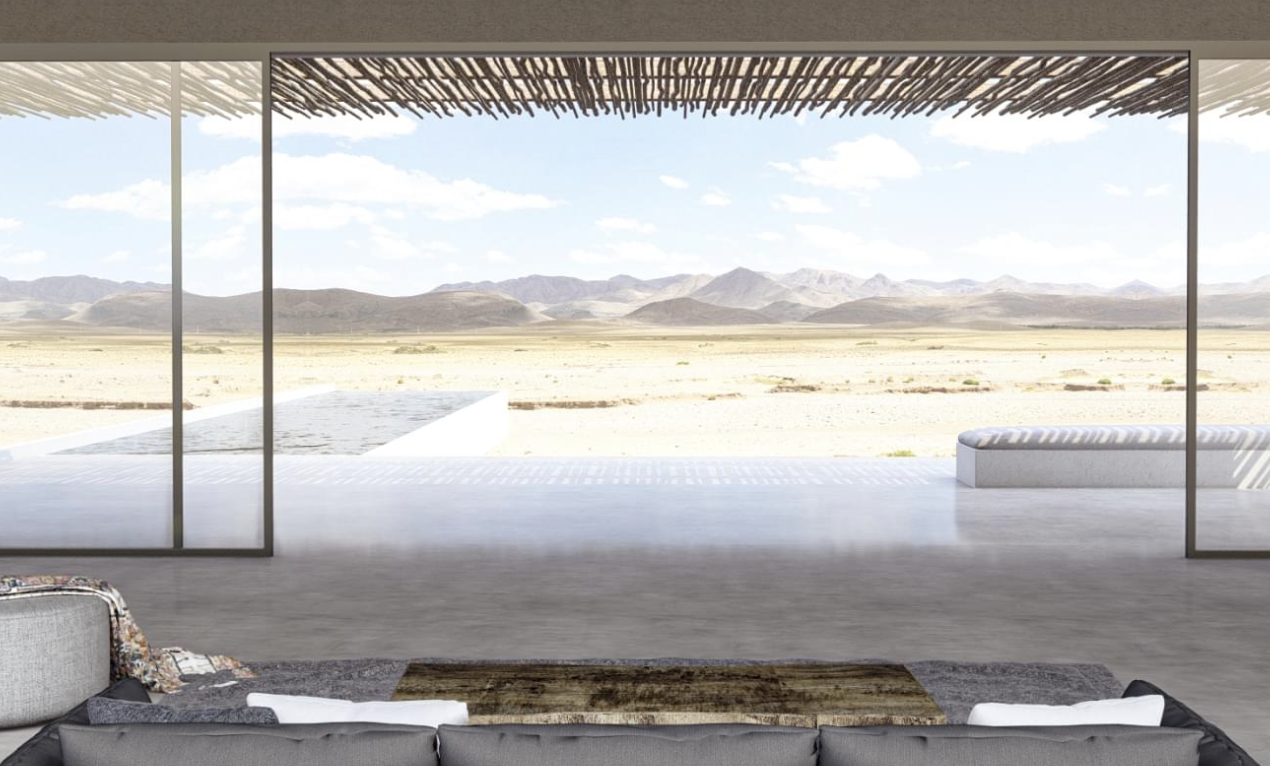
Brandon: Well, give me an example. I think you talked about the fruit bowl as being a way in which the space wherein it almost forces us to respond a certain way, or the lobby where you create an open space that forces people to come to it. What are the other kinds of examples that you've used?
Adi: Oh, so many. Let's talk about an experience that everyone knows. For example, going into a supermarket. You feel overwhelmed; you turn right. You speak to a wall. That's something that we all do, because that's safer. We behave differently in spaces that we know and we don't know whenever you look at a public space, and you can see where people are spending time with. There's an incredible documentary — I think it's from the '60s — called the Social Life of Small Urban Spaces. Have you watched it?
Brandon: No.
Adi: It's wonderful. They're so insightful. It's about how people behave in spaces, how they interact with each other and what they enjoy doing, and what is that sense of urgency that people have in a space, and how they respond to the sun, or sitting in the sun, or having some shade. So let's talk a little bit about patterns. There is a pattern called 'prospect and refuge.' It's that feeling of being protected from above and behind and overlooking a distant view. That is something that our neurobiological body responds to it so much. That's why we love viewpoints.
Brandon: That's like where we met. In Lisbon, it was that sort of location, yeah.
Adi: Exactly. So imagine viewpoints. Window seats, there is something irresistible about them. And tall men. Women, once you have a tall partner, it's the same pattern. It's like, "Oh, I want to feel protected. This is it." We don't think about those things. But in design, actually, in retail design, we think about it all the time — the scent design and shelving strategy, and how we feel about things that are in eye level, or above-eye level, or below-eye level. But what if we use the same ideas for good, for creating inspiring places, for creating places that amplify well-being, in mental and physical health? We can do that. We have the tools.
Brandon: Are there ways in which these insights have shaped your particular creative vision? Is there a way you would describe your distinctive architectural style? Does it cater to some of those elements?
Adi: Yeah, absolutely. I wouldn't say it's a style, but I think it's an approach or a way to ask questions. As I said, I like asking questions. On our website, there is an incomplete manifesto that keeps changing because of how knowledge keeps changing and how we are. But definitely, to be able to tap into different cultures and places. Brandon, if you look at my world map, where I've been, it looks like a kid drawn it. It's just so full of lines. I find it incredible as a creative to be able to experience with all of my senses different places around the world, different skills, and patterns, and light, and building techniques. This is just like mind-blowing, and as good as it gets really as a creative to be able to experience that. What I noticed is that some places have that magnetic feeling, that timeless quality that we feel drawn to. I think we all know it in our gut feeling when we see a place and you just go, "Oh, I love it here. I wish it could live here." You had that maybe in Italy. It's quite often that you walk by a house or a balcony, and you just think, "Oh, it would have been great to live here."
Also, the other experience of being somewhere and feeling contracted and restless, but it's all right. You don't know why you're feeling so weird, but you can't wait to leave this place. So we all had those experiences. It has nothing to do with budget. It made me think, okay, how can you create those kinds of places? It's just a set of so many different things that we can take under consideration depending on the site, the project, which kind of moments we want to create there. Where are we in the world? What time of the day people are going to use this building? There are so many factors to take into consideration.
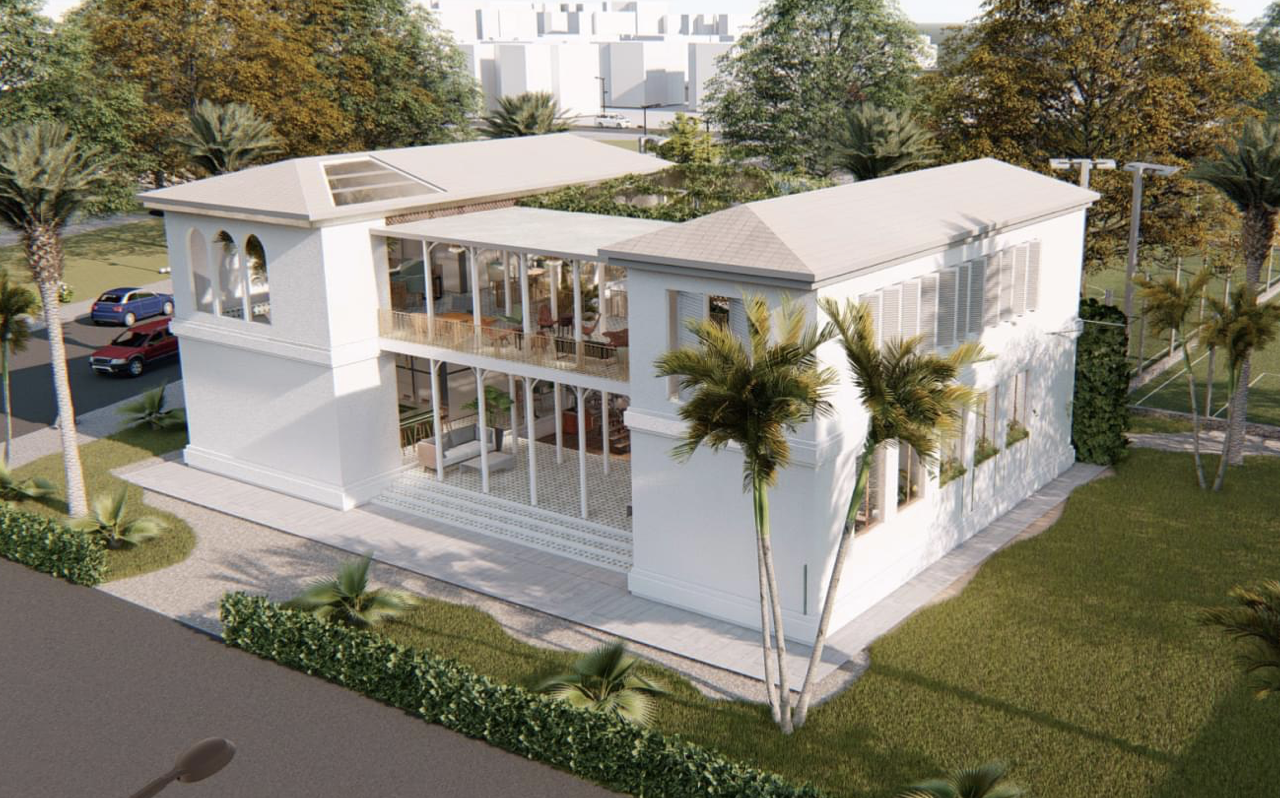
Brandon: So it has to meet the specific needs of the people in that context and the purpose, I suppose. Are there particular projects, or is there one that comes to mind that you would consider beautiful, that you're especially proud of or one that for you would exemplify what beauty looks like to you and your work?
Adi: Yeah, so I'm working now with a developer on this future of work concept. We started developing it at the studio. It's called 'the irresistible office.' But actually, what we're going to do there is this co-working space that's in nature. Why I think it's especially beautiful is because it invites people to rethink how we are operating in this world. We've all been through the cubicles, a dark time in history. Let's not talk about it. It's definitely not productive, not creative to feel that someone is always looking over your shoulder in the corner office. It's such an industrial mindset.
As we're shifting from quantity of hours to quality of work — I know AI and all that is becoming part of our life — what is the human factor that we need to nourish? That's creativity. That's urgency. That's movement. We're not meant to sit for 10 hours a day. That's not how we are wired. That's not what stimulate our brains. So how do we create a space where it invites people to incorporate movement into the day, and to go into deep workflows and flow states maybe if we allow them enough, and how collaborative work looks like today?
As someone who works from her laptop in different places in the world, what will make me come to an office? Meeting other people, brainstorming with them, creating with them. What kind of spaces are going to stimulate our senses and creativity and collaborative thinking? That's fun. That's something we can play with. I think it's going to be beautiful because it's going to allow people not onely visually pleasing, but also allow them to bring their full self to their workplace, to that company or retreat. Yeah, I'm very excited about this one.
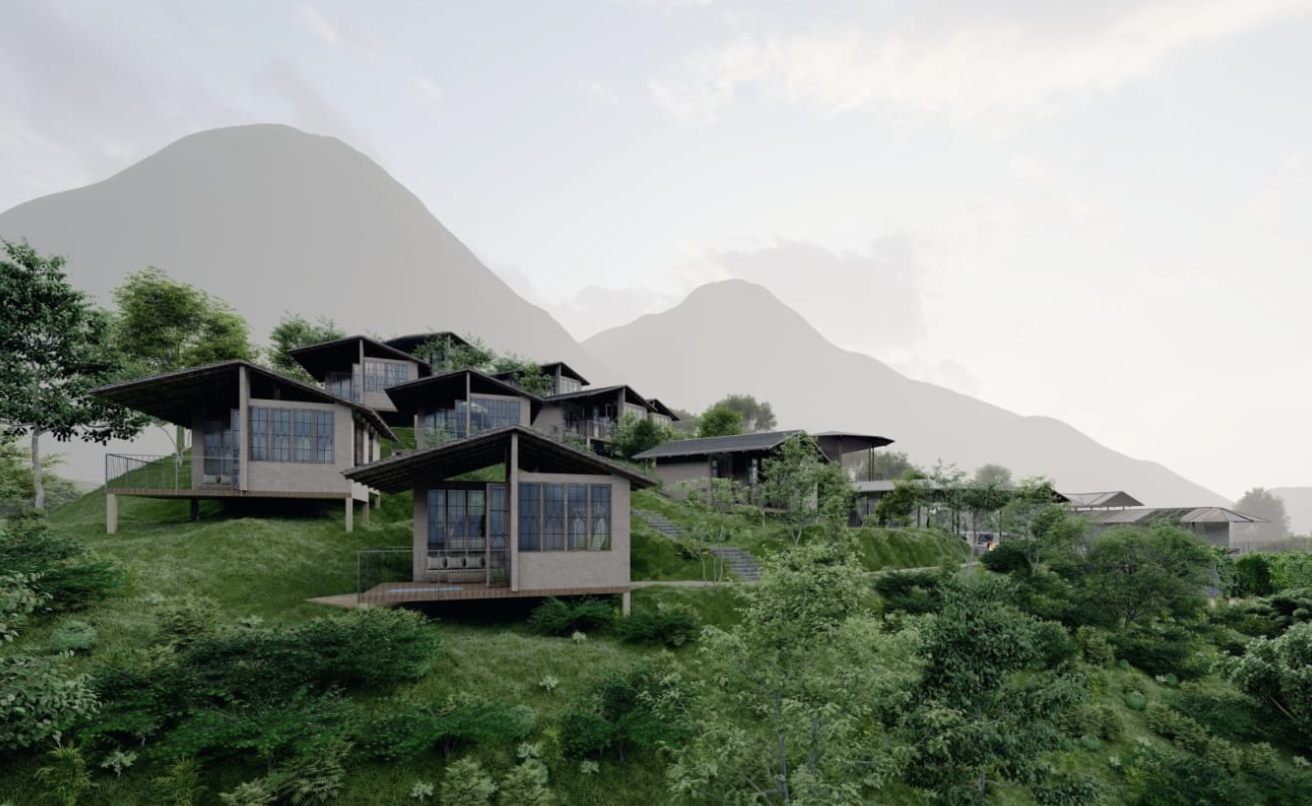
Brandon: Right. Yeah, re-humanizing work has certainly been the big challenge of the day. You've also built this movement, The New Movement. Could you talk about that and then the manifesto, as well as the way in which you're working in a nomadic process, I suppose? It involves so much movement. How does that look like? What are you building there?
Adi: Sure, happy to share. So because of the way I like to live or because of the things that I find satisfying in my day to day, I also had to structure my business in a new way. That's also thanks to other nomads and global citizens that I met along the way and had taught me a lot about how to manage remote teams, how to build a business that is scalable. I don't hire based on location. I hire based on talent. There's so much talent in this world. It's mind-blowing. For each project, we curate a specific team according to the project's needs. It makes sense, right?
Brandon: Yeah.
Adi: Also, we'd like to do some things that are not very common in the architecture world. For example, design sprints — using methods from design thinking. Why not do a three-day workshop when you start a project on site with the founders, with experts, with permaculturist, and everyone we want to bring on board? Everyone prepares a presentation. Then we can brainstorm together and start the project when we know so much more instead mailing for months. To be able to celebrate creativity and collaboration in that way, and really to ideate and identify the problem that you're trying to solve in that specific project, and how together we're going to do it — that's part of The New Movement.
It's about not only the way we do things, but it's also about really rethinking and reimagining how would an office look like, how would a house like. Maybe education, how people are studying. Maybe we can do that better. Maybe we can think about the future. We don't even know future of work and all that. We say that 10 years from now, most of the jobs haven't been invented yet. So what are we even teaching those young people? Do we need to teach them to be flexible and adaptable and creative and to self-taught maybe, to go after their curiosity? How do we design a space that supports that? Many questions.
Brandon: Yeah, right. I suppose, hypothetically, if there's a project in say Paris, do you bring in a global team? How does that work concretely?
Adi: Well, it depends on the project, and it also depends on the budget. But ideally, I like to do the first phase of the project on site with the founders. Also, depending on the timeline, sometimes we'll do the design sprint, and sometimes we just do everything online. We recently worked with a client in the US. The entire process was remote. But what was beautiful is that the local firm that we're working with, they also joined the workshop. They have said, "Oh, we never spent so much time doing this part of the work." Because usually, you just give a brief and the architect was like, "Sure. Oh, I know what you need." And that's it. I heard a friend of mine bought a property in Costa Rica. He called me and said, "I heard it's a good idea to build a three-bedroom house." I was like, why? What are you going to do with your bedrooms? Are you going to see your family? Do you want to work from home? How many kids do you want to have? Let's talk about that before you create something that is — it's going to last for so long.
Brandon: Yeah, so rather than just having generic cookie cutter type of advice, you're—
Adi: Exactly.
Brandon: I mean, another challenge I wonder if how do you deal with this, is working with people from around the world brings its own unique challenges? People have their own cultural expectations and ways of working. Do you find that to be a challenge? Are there ways to make that process of working together beautiful, or do you find obstacles to that?
Adi: I think obviously it has its challenges. So it's always good to set intentions and understand exactly what part of the work they want to engage in. Are you talking about the clients or the team members?
Brandon: Both I suppose, just because of the cross-cultural dynamics when you're working with people from different cultures.
Adi: Yeah, funny because that first project in Japan, they had — there are amazing architects in Japan, right? It's known for its architects. Then they hired an architect and had a consulting session, that hotel project with him. But in Japan, it's not common to disagree with your client. When they told him, "We want to cancel the lobby in the public areas," he's just like, "It's a great idea. It's a great idea." Because it's rude to disagree. I'm Israeli. I sometimes can't keep my opinions to myself, and I'm trying hard. Sometimes that culture difference work in my favor, like this case. But in general, no, I haven't had any specific challenge with that.
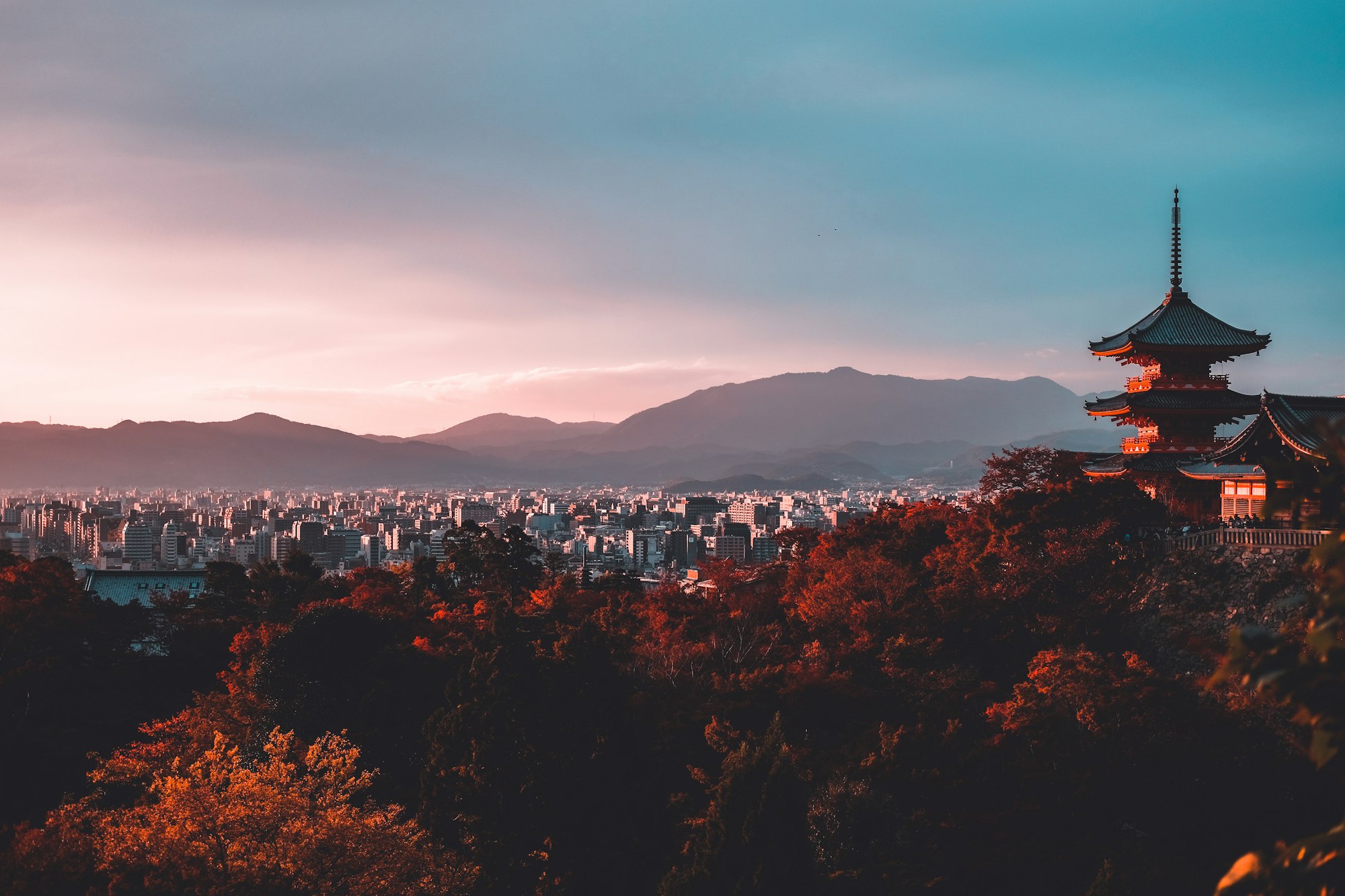
I think the kind of people that I get to work with are already open-minded and are seeking something different. They're seeking something that is bringing a new perspective. They are encouraged. I like to challenge them. They're encouraged to think bigger and to question everything before we start. It's not just the, how many square meters we're going to build? It's really about what is. Sometimes we'll start with — this is something that I brought from experience design — let's envision what emotions we want people to feel. Let's stop to their subconscious first, and then create the atmosphere around that. How do we activate each sense to support that? That's quite unusual. Sometimes I have people, especially the construction guys, sitting in the meeting and they'd be like, "I have to imagine what people want to feel? I never did that in my entire life." That's part of the process. That's important. This is what you remember.
Brandon: That's great. Have you found challenges then with the nomadic aspect of working the way you do? I suppose not knowing where you'll be in in three or four months, how do you deal with that?
Adi: Honestly, I really love it. I love not knowing. I think after routine life, there's just something about it. There is something called openness to experiences. Are you familiar with that skill? It comes from the world of—
Brandon: The psychological. Yeah, personality type.
Adi: Exactly. How likely are we to try new food, or listen to new music, or go to a country that doesn't speak English? For me, I guess how I'm wired, the level of openness to experience that I need is quite high. I love not knowing what's going to happen next week. Because now I'm in France. I wasn't planning on coming here. I got invited to a conference. I said yes. Then I said, well, if I'm here, I might as well spend some time somewhere beautiful.
In terms of challenges, obviously, being away from family and friends, that's not easy. Sometimes I do want to touch the materials. That's one thing. We're building a project in Portugal. Last year, I was in Berlin. We needed to finalize some of the colors for the walls and some of the tiles that we chose for the project. I have my local team there, and they're doing incredible work. But I still want to see it. So am I just going to fly in to have a look at the material? Instead, I found someone who is selling the same product from that company in Berlin somewhere, like one hour outside of the city. So I just went there. But that could be challenging, for sure.
Brandon: I imagine you encountered others who are living this sort of nomadic lifestyle. Is there a way of building community in this way of life? Could you talk about how this is not an isolated experience, I suppose?
Adi: Oh, no. Sometimes it's too social, to be honest. The location independent movement and digital nomads has grown so rapidly in the past few years. So I started five and a half years ago. It was still in the making. But now there are hubs of nomads in different cities around the world. You have meetup groups. You have just like plug-in communities that you can come and meet people, also co-living. I don't know if you're familiar with the concept of co-living.
Brandon: I'm not.
Adi: Okay. Co-living is like the older brother of co-working. It's the intentional living in a community setting, where you'll have a slightly smaller apartment in exchange of having some beautiful communal areas. Many of the guests in my podcasts are co-living founders. The early adopters of co-living, which is now booming and spreading all over the world, were nomads. Because you travel somewhere, and you want to meet people that are not only tourists. They want to do sightseeing and move on. They want to stay there for a month or two, pretend their locals, rent an apartment, meet the neighbors and all that. Co-living allows you to stay longer in places. It's usually fully furnished. You get to meet a lot of awesome people from different places around the world. So that helps.
Brandon: Wow. That's fascinating. So what are you looking forward to next as you move forward? What is exciting you beyond the project that you mentioned that you're building?
Adi: Where to start? So many things. What excites me next? Honestly, it just keeps getting better all the time. At the beginning, I was mostly hanging out with nomads who have some passive income, and they have online businesses. That's great, because it helped me to get a better understanding of the lifestyle. How can you work not eight hours a day? Maybe you structure your business in a way that you have some times that are more busy and some other times that you can recharge. That's great. I learned a lot from it, and I'm super grateful.
But something in me is looking for a bigger purpose to connect with people who have bigger missions. They want not only to have their cocktail by the beach with a laptop, but they also want to create ripples of impact in the world by using their energy for a greater mission, like I'm feeling in my business. I find myself seeking more of those places like where we met, places where people come to connect with other interesting minds, and co-create. There are many, many seeds that are being planted there. Some of them sprout a month later or two years later. You never know what's coming next.
Being part of those community makes me feel like I belong. It makes me feel like I'm finding my tribe. It's okay that I'm not satisfied with just nine to five, going back home, and watching Netflix. That's okay. That is not for me. I'm craving adventure. I'm craving deeper connections. I'm willing to work really hard to make some impact in the way that we use our buildings. I don't know if you know that we spend about 90% of our time indoors. That's insane. 90% of our lives. And we're so busy biohacking everything nowadays. We monitor our sleep, and we read those rings. We do ice baths and supplements. But we don't really talk about how the places that we live in are affecting how we think, how we feel, and what we see outside of windows shapes everything about us. That's part of my own mission. There are many beautiful people around the world who are sharing this mission. That makes me sleep better at night. To be able to bring this message out and talk about it more in design spaces according to those factors, that really excites me.
Brandon: That's a beautiful purpose and mission, I suppose, to inhabit and to allow that to shape you. I suppose the community that you're building allows for friendships that are stable. Because I suppose that's another challenge. How do you, if you're moving, really get to know people and build lasting friendships? How does that work?
Adi: I get this question quite often. We just had a session about it in the conference I came from. It's interesting. I think the loneliest I've ever felt was when I was married. I had my job, and I felt like I don't belong. I was surrounded with people but I felt so alone. I find that the kind of connections that I do as I go as we're sharing experiences together or having the same values and mission, that connects me with people on a deeper level. Then again, it's not about quantity of time we spent together. It's about the quality of moments of connection.
Some people I met along the way, they're close friends of mine. We see each other once a year, but we're in touch all the time. I can always call them and brainstorm together and come up with a crazy idea. They'll be like, "Oh, let's go for it." This is like one way I'm filtering the people in my life. Let's say, you're going through a rough patch in business because that happens from time to time. There's 1% of people in my life that will be like, "How about you get a part time job?" The other one is, "Let's do a call and brainstorm together. Who can we introduce you to?" Using our collective resources to support each other — that's part of that new mindset that I'm so grateful to belong to.
Brandon: So it's creativity and that more outward looking and more problem-solving focused as opposed to resignation and being sort of, well, there's nothing more. I'm curious about that itch that you had about, is there more to life than this? Is that still around, or has that sort of been satisfied?
Adi: It's not satisfied. No one tells you this, that bucket list traveling kind of thing. So you have this list of places that you always want to go to. But no one tells you that it's not only that you go to those places and that's it. You also want to go back there. You also discover new places you want to go to. So it's a never-ending cycle of curiosity. There are still so many places that I haven't been to and I'm curious to experience. But also, this is quite a new understanding for me.
I've been a proud nomad with a carry-on for over five years now. I think it would be fun and scary and interesting to have some sort of a base somewhere. But now the question is, where? It's like I'm in love with so many places. How do I choose? I don't know. I'm waiting for it to become clear. I still want to travel. I still want to structure my year. Even if I'll have a base in a way that I go to somewhere new when there is a new culture and a new language. I always go in deep into the culture, into what people used to do there before electricity was available, before we could compensate for our mistakes with AC. To understand what people used to do there. We're so excited about zero-miles construction nowadays. It's like, this is what we used to do thousands of years ago. That was the only choice. That was the only choice.
Brandon: Wow. Yeah, things go full circle. Oh, gosh. I'm sure you've met a lot of folks along the way who were just simply aspiring to sitting on the beach with their laptop and a cocktail. Do you have any advice for people who are chasing that dream as to what is a more meaningful or fulfilling way to work as a nomad?
Adi: Yeah, well, first of all, I think it's great when people break the script, and they allow themselves even for a month to go somewhere new and gain a new perspective. No shame. This is so great. And to be able to relax and go back to what is my own rhythm as opposed to busy, busy life, always being productive, always feeling guilty. Nomadism allows you to change the places you live in according to how much you can spend. So many nomads go to Thailand. There are places where you can live under $1,000 a month. Then they have time and headspace, because they're not so busy paying their bills all the time, to come up with no idea. So sometimes we need that.
But to answer your question, there's something called the fascination factor. It's an exercise in positioning. I think it's by Mark Levi. It's basically a way to write a book, but I use it for other things — to curate knowledge and to understand. You know how you have those stories that you keep telling or quotes that you like, and things that you find personally inspiring? He advises you to create a database of that. It's 10 minutes a day. Just write it down. Write it down. Write it down. Put everything on paper. I use Trello because I like Trello. But then, after a while, when you have a good amount of data, you start to see patterns. You start to see the things that are fascinating for you that sparks something, and your eyes lit. Those things.
And if we allow ourself — this is different for each person — then you can see the things that are really exciting for you. Naturally, you spend more time exploring them. That's a great start in being more connected to purpose. Ideas just come from there. But first of all, you have to make the effort to get to know yourself, to say, what is success for me? Do I want an office with 100 employees? Definitely not. Not my dream. For me, success is having free time. Success is to be able to spend one day a week studying, just going through research and journals. Yeah, this is wow.
Brandon: I wonder if you might — yeah, the word success is loaded because it has all of these connotations of wealth and status and so on. It seems like you're talking about something like a beautiful life, like a really rich conception of what a life well-lived could look like and aspects of what that could.
Adi: Yeah, do we really have to wait until we are retired to love waking up in the morning? Is that something that we want to collaborate with? Do we need all those belongings? Probably not. I love beautiful items. Don't get me wrong. But every time we buy something, one thing we bought with our money, who are we supporting? A big brand family business and all that. The other thing that we do, we exchange life for it. How much life did I have to spend? How many hours of work did I had to spend to get to buy this thing? And if we're honest about it, the best things in life, once basic needs are met, are free. It's a sunset. It's sharing a drink with a friend, or sitting with your father on the balcony. Those sweet, beautiful moments in life, they're not expensive. They're accessible to us. Then we have more time.
Brandon: Yeah, prioritizing them and structuring your life so that those things are privileged as opposed to sacrificed. It's the challenge for many of us.
Adi: We don't have to go through life prices to come closer to that. It seems like that we're always starting by pleasing others or the social scripts. Then we break free from that and say, "Oh, but what I actually want to do, how I want to live." I just hope maybe we can't do it this way. I hope that the gap will be smaller between those two things.
Brandon: Great. I'm curious as to whether this is part of what you do. Is to help others in a similar situation in some way then, to find this way of creating a beautiful life, is that part of the movement that you built?
Adi: Hopefully, by modeling. I do have people reaching out to me. Students and architects were like, "Oh, we also want to live nomadically." From time to time, I do Q&A sessions to try and answer the questions all at the same time. Because otherwise, I will not have any time left. But I think the best thing we can do is just live it yourself. Walk the talk. That's all we can really do.
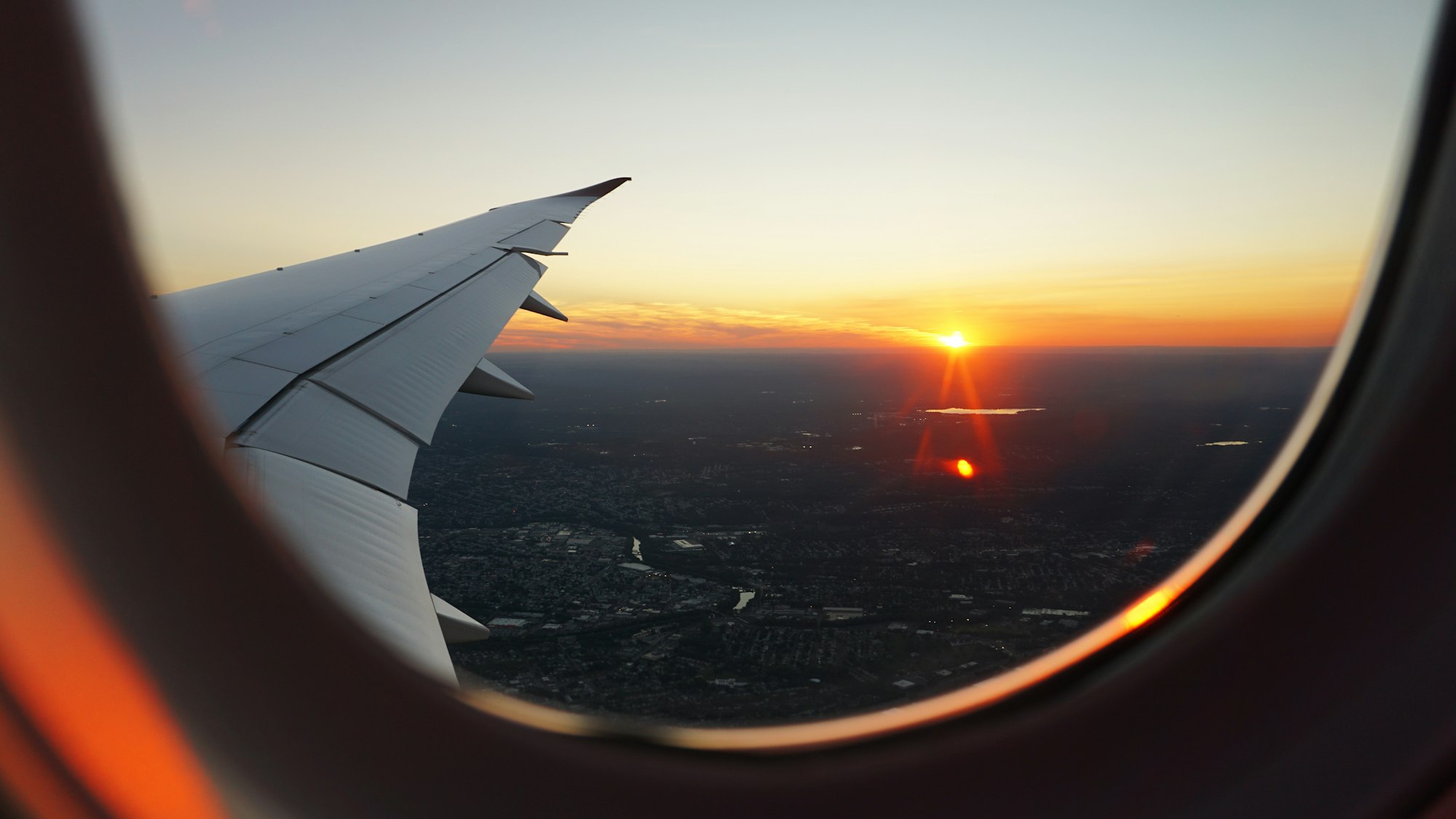
Brandon: Great. Well, Adi, thank you so much for your time and for your insight. Where can our viewers and listeners find your work? Where would we direct them to?
Adi: A great place to start is our website. It's The New Movement at www.thenewmvt.com. Because movement is kind of long. Then my Instagram is also a great place to connect. It's @nomad.architect.me. And LinkedIn, feel free to reach out. I would really love to hear your thoughts. Thank you so much for having me. I'm really enjoying our conversations always, and with you especially.
Brandon: Fantastic. Thank you.
If you found this post valuable, please share it. Also please consider supporting this project as a paid subscriber to support the costs associated with this work. You'll receive early access to content and exclusive members-only posts.
